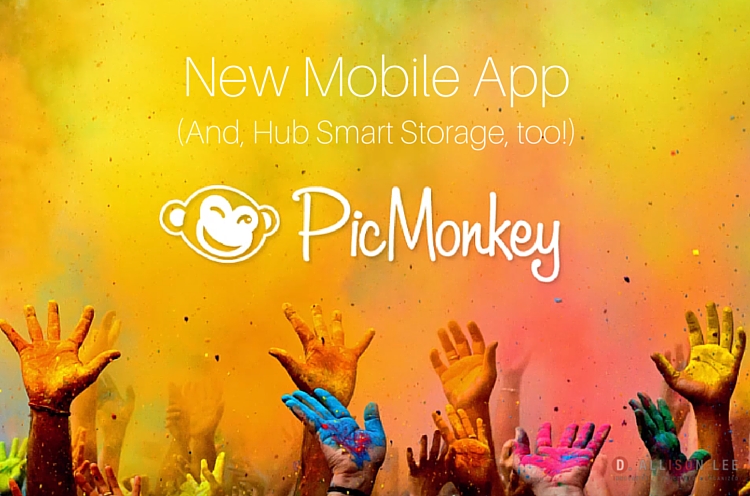We all want to be more productive, in business and in life. And when you…

Tech Tools for Entrepreneurs: How to Build Your Productivity Stack
Today, I’m diving into a topic that’s near and dear to my heart: leveraging technology to supercharge your productivity. As a solopreneur, I understand the juggling act that comes with running your own show. That’s why I’m excited to share how you can start building a killer productivity tech stack that can make your entrepreneurial journey not only smoother, but more successful.
Why Entrepreneurs Need Tech Tools
Running a solo business is thrilling, but it comes with its challenges along with lots of moving pieces and parts. You’ll have projects to track, tasks to stay on top of, finances to manage, webinars to host, blog posts to write, podcasts to record, and dances to perfect for TikTok (maybe!) 💃 along with client work that will consume your workdays.
That’s where the advantage of technology comes in. Having the right set of tech tools is like having your own set of digital sidekicks that help you stay organized, focused, and efficient.
That’s what a productivity tech stack is all about – your own collection of apps and tools that make your life as a business owner easier no matter if you’re solo or have a team.
How to Research Tech Tools
There are three things you can do to make sure you don’t get overwhelmed when you’re ready to start building your tech stack.
1. Research Smart, Not Hard
The world of apps is vast, and it’s easy to get lost in the sea of options. Save yourself the headache by adopting a smart research strategy. Start by clearly defining your business needs and goals.
Are you looking for tools to enhance communication, manage finances, or automate routine tasks? Something else? Do a complete brain dump of what you need to accomplish.
(scroll down to see steps you can take right now)
2. Think About Scalability
Your business is dynamic, and your tech stack should be, too. When selecting tools, consider not only your current needs but also the potential growth of your business. Switching to a new app because you’ve outgrown the one you’re using can be time-consuming and can come along with a learning curve.
So depending on your future goals, think about tools that can scale with you, accommodate an expanding client base, increased projects, or a growing team. Scalability ensures that your tools remain valuable assets as your business evolves.
But, wait! That doesn’t mean that you should break the bank on a tech tool with a bunch of features that you don’t need just yet. So check pricing tiers and choose the one that has most or all of the main features you need AND suits your current budget.
(it’s a balancing act, but it’s also doable)
3. Talk to Your Community
Don’t underestimate the power of community insights. Entrepreneurs, just like you, have walked the same path and can offer helpful recommendations.
So jump in online communities, forums, and social media groups related to your niche. Ask for tech tool suggestions and share your own experiences. The collective wisdom of a community can unveil hidden gems and help you learn about potential pitfalls.
On the flipside, just because an app worked for a friend or colleague doesn’t mean that it will work for you. So don’t skip the steps I’ve listed below.
(want to jump into a community of like-minded solopreneurs, navigate the tech landscape with confidence, and be a part of a space for shared knowledge and collaborative problem-solving 👉 reach out to me for an exclusive invitation)
How to Build Your Tech Stack
Now’s the time to get to work. Remember, building your productivity tech stack is more than just selecting a bunch of tools; it’s about crafting a digital ecosystem that will supercharge your business and help you to be more efficient and effective.
This process will take some thought and a block of uninterrupted time, so open your calendar and schedule 45-60 minutes (or more) for this project.
Think about your unique business needs.
- What tasks do you find yourself doing repeatedly?
- Where do you struggle to stay organized or efficient?
- What are some pain points that keep popping up for you on the regular?
Thinking through these questions (and others) will help you choose the right tools. From productivity apps and project management tools to automation platforms, there’s a tool for every facet of your business.
The key is finding the right blend that seamlessly aligns with your workflow and enhances your overall productivity.
Now, start mapping things out.
Head to your whiteboard, open your mind mapping app, or reach for your favorite notebook.
- Choose one of your most important workflows related to a specific task or pain point
- Map out your workflow and identify all the required steps and people — and results you want
- Identify where in the workflow a tech tool that can help you execute it more effectively and efficiently
Then, search for the best apps.
When you’ve got a clear picture, search for one to three apps that can do the job well. Choosing more than three can be overwhelming, time-consuming, and make the process more complicated. That said, no more than three.
There will be overlap with the apps you research and you might find yourself faced with stellar options. Customer service can be the tie-breaker or move you toward one in particular.
- Look through online reviews and forums and pay attention to comments about learning curve (steep vs easy)
- Watch “overview” and “how to” videos on the app developer’s YouTube channel to help you make a selection
- Reach out to the app developers on social media and see if/how they respond to your questions
Choose your top app.
You’re now in the home stretch! Your goal here is to narrow your top 3 apps down to 2 and then to 1. Ideally, you want to have no more than 2 options to ultimately choose from. When you have too many choices, decision-fatigue can set in and will make the process even longer. So the fewer choices you have, the better.
Alright, look at your top two and choose. If you find it tricky to do, think back to your experiences with customer service or simply flip a coin. (seriously!)
Finally, test your top app.
Congrats are in order because you’ve made your pick! Now, you must test. Make a solid attempt to integrate the app in your workflow and to understand how to use the key features you need.
Give it a good 4-6 weeks or more and resist the urge to try something new during that time. Take advantage of free trials or free plans when possible so you can get a feel for the app.
No free options? Consider paying for one month of service with all the features.
- Does it seem intuitive to you?
- Complicated or easy for you to understand?
- Does it make you frustrated?
- Have you given it enough time or did you give up pretty quickly? (sorry, I had to ask. 😊)
(psst! tap into the expertise offered in my upcoming course, “How to Become a Successful Solopreneur” — I’ve done the legwork, sifted through the options, and can guide you straight to the tools that will align with your business objectives)
Final Word
Building your productivity stack involves finding the best apps that solve your productivity problem or gives you the result your looking for. Your goal is to pull together a system of apps that work seamlessly for you, save time, and help you to be more effective and productive. Don’t be afraid to experiment and find what clicks.
Use the process I’ve shared about as often as you need to until you have a group of strong apps at the ready. Okay, now go build your tech stack! 💻
Ready to Harness Technology and Succeed as a Solopreneur?
Dive deeper into the strategies discussed in this post and get comprehensive guidance in my course, “How to Become a Successful Solopreneur: Leverage Tech Tools for Maximum Productivity and Profit.” Learn proven techniques to leverage technology, master time and energy management, and achieve your business goals with confidence.
Join the waitlist today to be the first to know when enrollment opens!
Empower yourself with tech tools and knowledge to thrive in your solopreneur journey. Don’t miss out! Grab your spot and take the next step towards solopreneur success. 🚀




This Post Has 0 Comments